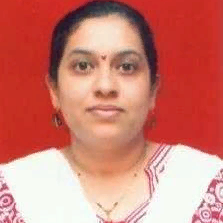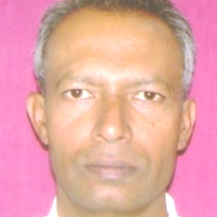International Journal of Image, Graphics and Signal Processing (IJIGSP)
IJIGSP Vol. 11, No. 8, 8 Aug. 2019
Cover page and Table of Contents: PDF (size: 974KB)
Optimization in Image Fusion Using Genetic Algorithm
Full Text (PDF, 974KB), PP.50-59
Views: 0 Downloads: 0
Author(s)
Index Terms
Image Fusion, Evolutionary Algorithm, Genetic Algorithm
Abstract
Day by day, the advancement in sensor technology is increasing which is used for image acquisition. Different sensors can acquire the information of different wavelength. These sensors are not able to capture the complete information from the scene. Thus it is necessary to combine the images from different sensors to produce more informative image. Image fusion is the process of combing the information from input images. According to the application or need, image fusion technique can be used. Number of techniques with varieties of solutions is available for image fusion process. And thus it becomes difficult task to find an optimal solution for image fusion. Genetic algorithm is an optimization technique used for searching solution for large number of complex problems [15]. This paper gives the quality index of image fusion obtained using the combinations of different selection methods and crossover techniques in genetic algorithm. These techniques have been compared using root mean square error to obtain information about relative performance. The experimental result on some standard test images shows that performance parameters i.e. root mean square error (RMSE) and peak signal to noise ratio (PSNR) are good for multifocus and multisensor image fusion.
Cite This Paper
Jyoti S. Kulkarni, Rajankumar S. Bichkar, " Optimization in Image Fusion Using Genetic Algorithm", International Journal of Image, Graphics and Signal Processing(IJIGSP), Vol.11, No.8, pp. 50-59, 2019. DOI: 10.5815/ijigsp.2019.08.05
Reference
[1]Chaunte W. Lacewell, et.al. 2010. Optimization of image fusion using genetic algorithm and discrete wavelet transform. National Aerospace and Electronics Conference.
[2]Liu Cao, et. al. 2015. Multifocus image fusion based on spatial frequency in discrete cosine transform domain. IEEE Signal Processing Letters, vol. 22, no.2.
[3]H. B. Kekre, et. al. 2013. Review on image fusion technique and performance evaluation parameters. International Journal of Engineering Science and Technology, vol. 5, no. 4, pp. 880-889.
[4]Arash Golibagh Mahyari and Mehran Yazdi, 2011. Panchromatic and multispectral image fusion based on maximization of both spectral and spatial similarities. IEEE Transactions on Geoscience and Remote Sensing, vol. 49, no. 6.
[5]Richa Gupta and Deepak Awasthi, 2014. Wave-packet image fusion technique based on Genetic Algorithm. IEEE International Conference on Confluence the Next Generation Information Technology Summit, pp. 280-285.
[6]Mantas Paulinas and Andrius Usinskas, 2007. A survey of genetic algorithms applications for image enhancement and segmentation. Information Technology and Control, vol. 36, no. 3, pp. 278-284.
[7]Aqeel Mumtaz, et. al. 2008. Genetic algorithms and its application to image Fusion. IEEE International Conference on Emerging Technologies.
[8]Srinivasa Rao Dammavalam, et. al. 2012. Quality assessment of pixel level image fusion using fuzzy logic. International Journal on Soft Computing. vol.3, no.1.
[9]Mohamad Awal, et. al. 2008. Enhancement of the segmentation process of multicomponent images using fusion with genetic algorithm. IEEE International Multi-Conference on Systems, Signals and Devices.
[10]Anil Kumbhar, et. al. 2013. Fusion of multiple features in magnetic resonant image segmentation using genetic algorithm. 3rd IEEE International Advance Computing Conference, pp. 811-816.
[11]Liang Hong,et. al. 2009. Fusion of infrared and visible image based on genetic algorithm and data assimilation. IEEE International Workshop on Intelligent Systems and Applications.
[12]Arpita Das and Mahua Bhattacharya. 2009. Evolutionary algorithm based automated medical image fusion technique: comparative study with fuzzy fusion approach. 2009 World Congress on Nature & Biologically Inspired Computing.
[13]Jyoti Kulkarni, Dr. Rajankumar S. Bichkar. 2015. A Survey of Image Fusion using Genetic Algorithm. International Journal of Computer Applications, Proceedings NCAC 2015 (6), pp.33-35.
[14]Jyoti Kulkarni, Dr. Rajankumar S. Bichkar. 2017. Image fusion using genetic algorithm and different transform techniques. International conference on Signal processing, Computing and Networking,
[15]Jyoti Kulkarni, Dr. Rajankumar S. Bichkar. Comparative analysis of image fusion using DCT, DST, DWT, Walsh transform and Kekre’s wavelet transform. Advances in Intelligent Systems and Computing (Springer), Vol. 632, Ch.22, 978-981-10-5520-1_22, pp: 227-232.
[16]Nupoor Prasad, et. al. 2001. Evaluation of various image fusion techniques and imaging scales for forest features interpretation. Current Science, vol. 81, no. 9.
[17]Qiang Wang, et. al. 2004. Fast Quantitative Correlation Analysis and Information Deviation Analysis for Evaluating the Performances of Image Fusion Techniques. IEEE Transactions on instrumentation and measurement, vol. 53, no. 5.
[18]Igor V. Maslov and Izidor Gertner. 2006. Multi-sensor fusion: an Evolutionary algorithm approach. Elsevier journal on Information Fusion, 7(2006), pp. 304-330.
[19]Veysel Aslants and Rifat Kurban. 2009. Extending Depth-of-field by Image Fusion using Multi-objective Genetic Algorithm. 7th IEEE International Conference on Industrial Informatics.
[20]Vaibhav R. Pandit, and R. J. Bhiwani. 2015. Image Fusion in Remote Sensing Applications: A Review. International Journal of Computer Applications, vol.120, no.10, pp:22-32

